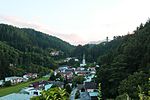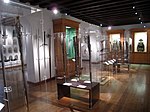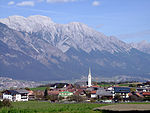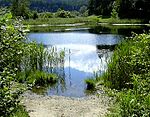Baggersee Innsbruck

Baggersee Innsbruck (also: Baggersee Rossau) is located in the south-eastern part of Innsbruck at the Inn River and belongs to the city district Amras. With an area size of 2.8 ha it is the second largest lake in the city area. Only the Lake Lans surpasses it by size and volume. Many people use the lake as recreation area in summer. The water can warm up to 24 °C. Recreational activities at the lake include beach volley, badminton, streetball or table tennis. In fall the water is intensively used for surfing. Despite the high usage, the water quality remains constant at Grade B. Reed regions, fresh water supply and subterranean connections with the sewage treat plant Rossau and Inn River provide the Lake with sufficient water upheavals. Rare water birds like cormorants and swans were detected by ornithologists who use this territory during the non-bathing season.
Excerpt from the Wikipedia article Baggersee Innsbruck (License: CC BY-SA 3.0, Authors, Images).Baggersee Innsbruck
Josef-Mayr-Nusser-Weg, Innsbruck Rossau (Amras)
Geographical coordinates (GPS) Address Nearby Places Show on map
Geographical coordinates (GPS)
| Latitude | Longitude |
|---|---|
| N 47.265555555556 ° | E 11.446666666667 ° |
Address
Kläranlage Roßau
Josef-Mayr-Nusser-Weg
6020 Innsbruck, Rossau (Amras)
Tyrol, Austria
Open on Google Maps











